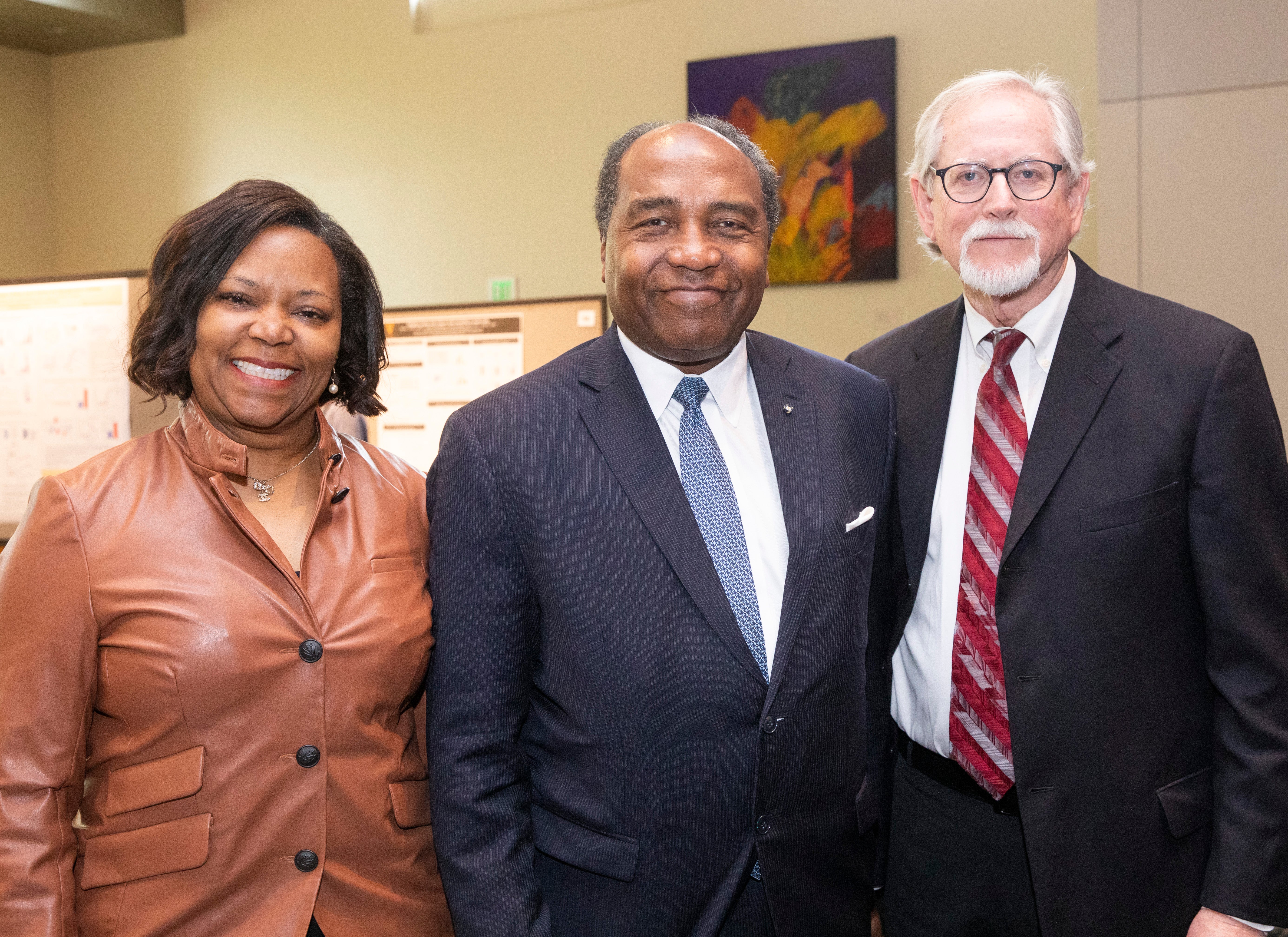Read the original, full story by Jill Clendening here.
Fifty years ago, Brian Smith of Huntsville, Alabama, and his parents Mary and Ralph had their photo taken at the opening ceremony for the Vanderbilt Diabetes Research Center. Smith, who had diabetes, and his family helped highlight the need for the newly opened National Institutes of Health-funded center – the first of its kind in the United States.
Smith and his mother recently returned to Vanderbilt as honored guests at Diabetes Day, an annual event hosted by the now-named Vanderbilt Diabetes Research and Training Center (DRTC). The event spotlights the work of researchers, and this year also celebrated the 50-year anniversary of the DRTC.
When Smith was the 3-year-old in the black-and-white newspaper photo, his mother had to continually test his urine for glucose. Now, he keeps an eye on his blood glucose levels using a continuous glucose monitor and has insulin delivered by an insulin pump – both inconspicuous devices he wears. Expressing gratitude for the scientific advances which have made his life with diabetes easier, he added he was “blessed to be there to be a part of such great history.”
In 1973, the Vanderbilt DRTC began its mission is to facilitate the discovery, application and translation of scientific knowledge to improve the lives of people with diabetes. Diabetes Research Centers (DRCs) improve the quality and multidisciplinary nature of research on diabetes and related endocrinology and metabolism research by providing shared access to technical resources and expertise and by creating an environment that supports innovative research.
In his introductory remarks, DRTC Director Alvin Powers, MD, shared how efforts by Vanderbilt’s Oscar Crofford, MD, were critical in the formation of the national NIH Diabetes Research Center program. Crofford testified before Congress about the need for diabetes research and education, then organized and led Vanderbilt’s grant application. Vanderbilt was chosen as the first center to be funded by the NIH, with Crofford as its director.
“These initial efforts were greatly enhanced by Vanderbilt’s strong basic science programs in physiology, biochemistry and pharmacology and outstanding investigators in endocrinology and pediatrics,” Powers said.
Daryl Granner, MD, who followed Crofford as director, gave remarks remotely at Diabetes Day, emphasizing how the Center helped scientists and physicians work together to make important scientific advances.
Today, the Vanderbilt DTRC includes 140 faculty members from 15 departments and three colleges or schools at Vanderbilt and Meharry Medical College who conduct basic, clinical and translational research on the cause, prevention, treatment and complications of diabetes and obesity.
As happened in the initial ceremony in 1973, the Dean of the School of Medicine and the Chancellor of Vanderbilt University were present at this year’s event. Jeffrey Balser, MD, PhD, President and CEO of Vanderbilt University Medical Center and Dean of the Vanderbilt School of Medicine, described Vanderbilt’s commitment to improving the lives of individuals with diabetes, especially as diabetes is so common in this region of the United States. Balser also mentioned how Vanderbilt’s efforts related to diabetes care were enhanced by the establishment of the Irwin Eskind Diabetes Clinic.
Vanderbilt University Chancellor Daniel Diermeier, PhD, said the Vanderbilt DRTC was a perfect example of the unique collaborative environment between Vanderbilt University and Vanderbilt University Medical Center, and remarked on how the DRTC’s 50th anniversary coincided with Vanderbilt University’s 150th anniversary this year.
“This is just a wonderful model of how we want to work together and the impact we can have,” Diermeier said. “Of course, it also advances the mission of training and educating the next generation of scholars and leaders on the frontiers of diabetes research and clinical practice. In all, if anyone wonders how Vanderbilt stands apart from other institutions and wonders how we’re making a difference and leading the way in this century, we can simply point to the DRTC and say, ‘This is the Vanderbilt way of work. This is how we move society forward. This is how we’re improving lives in our community and around the world.’”
Continue reading the original, full story by Jill Clendening here.
